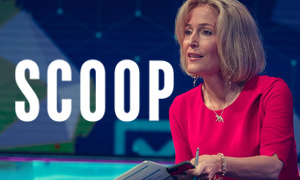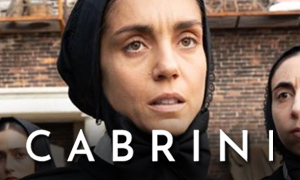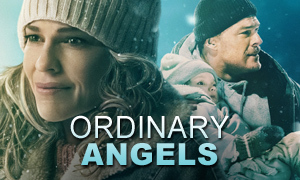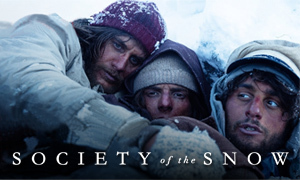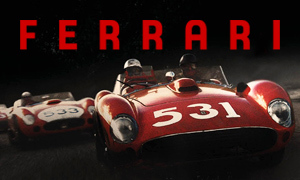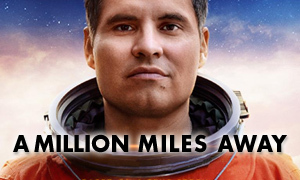How Much of the "Downton Abbey" Movie is Historically Accurate?
Would King George V and Queen Mary really stay overnight at estates like Downton Abbey?
Yes. Throughout history, there are records of British monarchs visiting the country estates of aristocratic families. For example, in the 16th century, Queen Elizabeth I would embark on tours around the countryside known as the royal progress. Over time, such visits became less frequent due to their costliness. However, in the early 1900s, King Edward VII would attend weekend house parties and stay overnight in his hosts' homes, often bringing his mistress.
The royals depicted in the Downton Abbey movie, King George V and Queen Mary, would also spend time at countryside estates, often so that the King could go hunting. Downton Abbey creator Julian Fellowes has said that he largely based the royal visit in the film on King George and Queen Mary's July 8-12, 1912 visit to Wentworth Woodhouse, the largest private residence in the United Kingdom and one of the largest estates in Europe. While there, the King and Queen watched a performance by Russian ballet dancer Anna Pavlova, filled up on a 13-course dinner, and enjoyed an extravagant ball (the movie concludes with a ball in honor of the King and Queen).
However, their visit to Wentworth Woodhouse took place years earlier than the film's setting of 1927 (it happened in 1912, the same year the events in the TV series began), and it was overshadowed by the Cadeby Main Colliery (coal mine) explosion on July 9, 1912 that killed almost 100 people. The explosion happened on the second day of their stay at Wentworth. The monarchs halted their plans and went to the site to comfort those who were grieving. On the final night of their visit, roughly 25,000 people gathered on the great lawn at Wentworth Woodhouse to show their appreciation for the King and Queen's compassion. In the movie, they spend only two nights at the fictitious Downton, but in real life, they spent four nights at Wentworth.
One obvious link between the Wentworth Woodhouse estate and the fictional Downton Abbey is that they are both located in Yorkshire (though the real-life shooting location for Downton Abbey is Highclere Castle in Hampshire). Wentworth Woodhouse (pictured below) does make an appearance in the film. The ball scene toward the end of the movie was shot there.
Alastair Bruce, a descendant of Robert the Bruce, says that it was King George and Queen Mary's visit with his own family at Broomhall House in 1923 that also helped to shape the film. Broomhall House had been the home of his great uncle, Edward Bruce, the 10th Earl of Elgin. Alastair acted as an historical advisor to the filmmakers, drawing on information he found in the Broomhall archives.
Instead of using one specific countryside visit as a point of reference, it seems that the Downton Abbey movie's royal visit instead combines aspects of various trips that the royals made to different country estates, focusing mainly on their visit to Wentworth Woodhouse, and to a lesser degree, Broomhall House and others. -TIME
Were estates like Downton Abbey really becoming a thing of the past?
Yes, at least in the way they had previously operated. The Downton Abbey movie's historical accuracy is perhaps most true to history as we watch Mary Crawley (Michelle Dockery) discuss the fate of her family's country estate. Though Downton is not a real place (the TV series and movie were filmed at Highclere Castle in Hampshire), its struggles represent very real challenges that similar real-life aristocratic families faced.
The working class in Britain had changed after World War I. Many women had gone to work in modern factories during the war, and after it was over they sought out those kinds of jobs instead of household staff positions. The factories paid well, as opposed to the army of cheap labor that the estates had been designed for. We previously saw examples of this in the TV series as some of the household staff left for better employment elsewhere. Thus, there became a problem of finding reliable staff who would accept the low wages.
Estates like Downton were also being taxed heavily and there was a hefty inheritance tax. Things became more difficult when the Depression hit in the 1930s. Sadly, it is estimated that more than 1,000 country houses were demolished in the 20th century, resulting in the loss of historic buildings, gardens and art collections. The modern-day equivalents of Downton that still exist have evolved to reflect their place in today's world. Families open their estates to tours and host attractions like concerts, speaking engagements, and education departments. As for the real Downton Abbey, Highclere Castle, it has seen a surge in tourism since the release of the series, which has allowed much-need repairs to be performed. Highclere is located 66 miles west of London, about an hour and 25 minutes by car. -The Telegraph
Did the King and Queen bring their own staff when visiting estates like Downton Abbey?
While comparing Downton Abbey to history, we discovered that the monarchs' household staff entirely replacing the staff at the estate is a bit of an exaggeration. They would bring a handful of staff with them. For example, it was common for Queen Mary to travel with a footman, two dressers, a page, one lady-in-waiting, two chauffeurs, a detective, and a maid for her lady-in-waiting. There was also a list of specific requests. For instance, when Mary stayed at Holker Hall, she requested six clean towels daily and "fresh barley water placed in her bedroom at two-hour intervals during the day." Such requests pale in comparison to those made by some modern-day celebrities. Mary also brought her own pillow cases and bed sheets.
How are King George V and Queen Mary related to Queen Elizabeth II?
If you're not up to speed on royal relations, King George V and Queen Mary are the grandparents of Her Majesty Queen Elizabeth II. The King (pictured below) is said to have doted on his eldest granddaughter and nicknamed Elizabeth "Lilibet". Elizabeth became Queen in 1952 upon the passing of her father, King George VI, who had taken over the thrown from her uncle, Edward VIII, upon his abdication in December 1936.
Did real-life visits by the royal family happen on such short notice?
Not usually, but the rush in the Downton Abbey movie is partially based on a true story. When King George V and Queen Mary were planning to visit Wentworth Woodhouse in 1912, the 7th Earl and Countess Fitzwilliam had only one month's notice to prepare for a four-night royal visit. In the film, we see the Crawleys and their staff a bit surprised when they receive notice of the royal family's impending two-night visit, and they rush to work on the logistics of their stay.
While examining the Downton Abbey movie's historical accuracy, we learned that such visits were normally planned much further in advance. Royal expert Marlene Koenig told Town & Country, "The king and queen were more likely to visit people they knew, rather than 'drop in'." Although, as with their visit to Wentworth Woodhouse, there were some exceptions. Of course, the rush to prepare for the monarchs' visit in the film adds to the drama. Downton Abbey creator Julian Fellowes said that the King and Queen's visit provided "a central story strand that would bind everyone together—that would affect the characters upstairs and downstairs and in the village." Having to prepare in a hurry forces the characters to work even closer together.
Did an Irish nationalist ever attempt to assassinate King George V?
No. There was never an assassination attempt on King George V, let alone by a radical Irish Republican. In the Downton Abbey movie, Captain Chetwode (Stephen Campbell) befriends fellow Irish Republican Tom Branson (Allen Leech) and uses him to gain access to King George V (Simon Jones). With what we know about Britain and Ireland during the year the movie is set, 1927, the assassination attempt doesn't seem too plausible. Though tensions did exist between the two countries, the worst of it unfolded prior to the period depicted in the film, namely during the Anglo-Irish War from 1919-1921. In 1927, Ireland was still recovering from a civil war that had destroyed the economy. They had more immediate problems to worry about.
Furthermore, an Irish nationalist trying to assassinate King George V would perhaps make more sense if King George had actually played an active role in Irish affairs, but he hadn't. The only shred of truth in the assassination attempt is the assassin himself. According to Liz Trubridge, one of the movie's producers, Captain Chetwode was loosely inspired by Roger Casement, who had been knighted in 1911 for exposing abuse at Belgium's rubber plantations. Chetwode then became involved in the Irish nationalist movement and was hanged for treason in 1916, more than a decade before the Downton Abbey movie is set.
Is Mr. Molesley's awkwardly low curtsy based on former PM Theresa May's curtsy?
Yes. While exploring to what degree Downton Abbey's royal visit is historically accurate, we learned that actor Kevin Doyle based Mr. Molesley's extremely awkward curtsy on former PM Theresa May's unusually low curtsy. "I modeled the bow-curtsy on Theresa May. I saw it and thought, 'I'm going to have that,'" said the actor.
Was Princess Mary in a bad marriage?
There's no direct evidence to support that Princess Mary, the only daughter of King George V, was unhappily married to Viscount Henry Lascelles. Their 1922 marriage was the first royal wedding to be covered in Vogue. The magazine described Mary as "a fairy Princess" blessed with youth, beauty and happiness. Lascelles was considered a highly attractive bachelor mostly due to the fact that he had inherited a fortune of £2,500,000 (about $270 million today) from the Marquess of Clanricarde, his great-uncle. The movie's depiction of Mary and Viscount Lascelles relationship is more based what we know about each of them individually than it is about any knowledge of their actual relationship, which is limited. Although, it was rumored that Lascelles married Princess Mary to win a bet, which is itself enough to raise questions about the state of their marriage.
The true story reveals that Princess Mary was known for being warm, shy, and loved by the public. Lascelles' reputation was less than flattering. He is rumored to have suffered from PTSD as a result of his time in combat during World War I. The fact that he was 15 years Mary's senior could have also posed a challenge for the marriage. Hugo Vickers, author of the biography The Quest for Queen Mary, says that it has been passed down by word of mouth that Lascelles was a difficult, old brute. He was referred to as hard and cold. The terribly shy Princess Mary would have never stepped out of line. She spent most of her time at Harewood House in Yorkshire, where some of the scenes for the movie were filmed. She died there in 1965.
Did Princess Mary remain with her husband?
Yes. During the movie's royal visit, a talk with Tom Branson inspires Princess Mary to try and make things work with her husband, which later earns Tom a complement from the King. In attempting to correlate Downton Abbey with history, we found no evidence that Princess Mary ever considered leaving her husband, Viscount Henry Lascelles. As stated in the previous question, the troubles surrounding their marriage are based on rumors and speculation. They remained together until Lascelles died of a heart attack on May 24, 1947.
Is the underground gay bar that Thomas Barrow visits in the movie based on an actual establishment?
No. It's true that homosexuality was a crime in England at the time and actual gay bars would not exist for decades (it was decriminalized in 1967). As for the underground gay bar that's seen in the movie, a place called Turton's, there are no historical records of such an establishment existing in the 1920s, at least not in that form. There are records of closed-door establishments in London where gay men would gather, but those were mainly for securing sexual partners and were dubbed Molly-houses.
"We didn't want it to be that kind of thing even though those existed," director Michael Engler told IndieWire. "This wasn't portrayed as fundamentally a kind of sexual den, but a place of brotherhood, and camaraderie, and playfulness, and a place where people could let down their hair and just enjoy themselves." Engler said they wanted it to be a place of friendship and warmth. With no real-world example to model it after, they based it on other establishments like early jazz dens and tried to imagine what those would be like in York. It became a pop-up club in a warehouse, which "would leave no trace behind because that's all you really could have there."
Some articles cite The Cave of the Golden Calf nightclub, which was open for two years from 1912-1914, as being Britain's first gay bar and a possible inspiration for the movie. While its bohemian, avant-garde vibe did attract gay patrons, it was also a bar for straight patrons as well, specifically those who were willing to leave their inhibitions at the door. It was geared toward an artsy crowd with carefree and somewhat hedonistic ideals. It wasn't a secret like the underground gay-only club in the movie, nor was it as innocent.
The way that Thomas Barrow (Robert James-Collier) keeps his sexuality closeted is certainly realistic for the time. If word of his arrest had gotten out, he would have undoubtedly lost his job and would have had to move on and start a whole new life somewhere else without a recommendation.
Did King George V and Queen Mary ever visit Highclere Castle, the shooting location for Downton Abbey?
Yes. The King and Queen visited Highclere Castle during World War I in February of 1917. Lady Carnarvon had opened Highclere's doors to allow it to be used as a hospital for the wounded. The King and Queen came to see its transformation and visit the injured. In season 2 of the TV series, the Crawleys similarly turn Downton Abbey into a convalescent home for wounded soldiers (though not the full-fledged hospital that Highclere was in real life). Lady Mary (Michelle Dockery) acts as a nurse caring for the wounded.
Will there be more Downton Abbey movies?
Creator Julian Fellowes hasn't ruled out a sequel to the Downton Abbey movie. "Is there another bite to come out of it?" he pondered. "It depends entirely on how people respond to the film." The movie's impressive box-office performance has certainly set the stage for more installments.
Downton Abbey Recap & Movie Trailer
Watch a Downton Abbey refresher that recaps the six seasons of the TV series. Then learn about the history behind the real Downton Abbey, Highclere Castle, where the series was shot.
